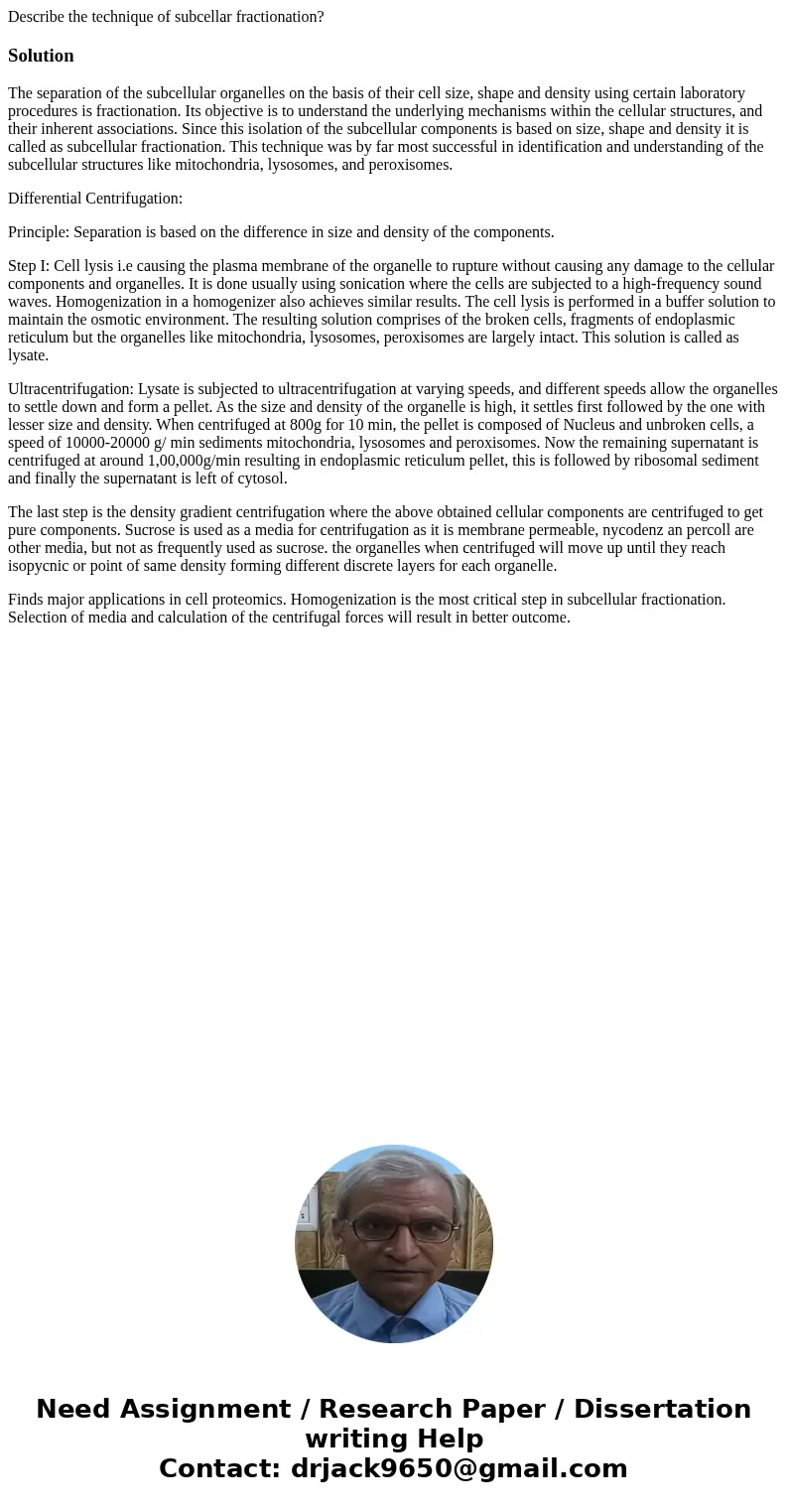Describe the technique of subcellar fractionationSolutionThe
Describe the technique of subcellar fractionation?
Solution
The separation of the subcellular organelles on the basis of their cell size, shape and density using certain laboratory procedures is fractionation. Its objective is to understand the underlying mechanisms within the cellular structures, and their inherent associations. Since this isolation of the subcellular components is based on size, shape and density it is called as subcellular fractionation. This technique was by far most successful in identification and understanding of the subcellular structures like mitochondria, lysosomes, and peroxisomes.
Differential Centrifugation:
Principle: Separation is based on the difference in size and density of the components.
Step I: Cell lysis i.e causing the plasma membrane of the organelle to rupture without causing any damage to the cellular components and organelles. It is done usually using sonication where the cells are subjected to a high-frequency sound waves. Homogenization in a homogenizer also achieves similar results. The cell lysis is performed in a buffer solution to maintain the osmotic environment. The resulting solution comprises of the broken cells, fragments of endoplasmic reticulum but the organelles like mitochondria, lysosomes, peroxisomes are largely intact. This solution is called as lysate.
Ultracentrifugation: Lysate is subjected to ultracentrifugation at varying speeds, and different speeds allow the organelles to settle down and form a pellet. As the size and density of the organelle is high, it settles first followed by the one with lesser size and density. When centrifuged at 800g for 10 min, the pellet is composed of Nucleus and unbroken cells, a speed of 10000-20000 g/ min sediments mitochondria, lysosomes and peroxisomes. Now the remaining supernatant is centrifuged at around 1,00,000g/min resulting in endoplasmic reticulum pellet, this is followed by ribosomal sediment and finally the supernatant is left of cytosol.
The last step is the density gradient centrifugation where the above obtained cellular components are centrifuged to get pure components. Sucrose is used as a media for centrifugation as it is membrane permeable, nycodenz an percoll are other media, but not as frequently used as sucrose. the organelles when centrifuged will move up until they reach isopycnic or point of same density forming different discrete layers for each organelle.
Finds major applications in cell proteomics. Homogenization is the most critical step in subcellular fractionation. Selection of media and calculation of the centrifugal forces will result in better outcome.

 Homework Sourse
Homework Sourse